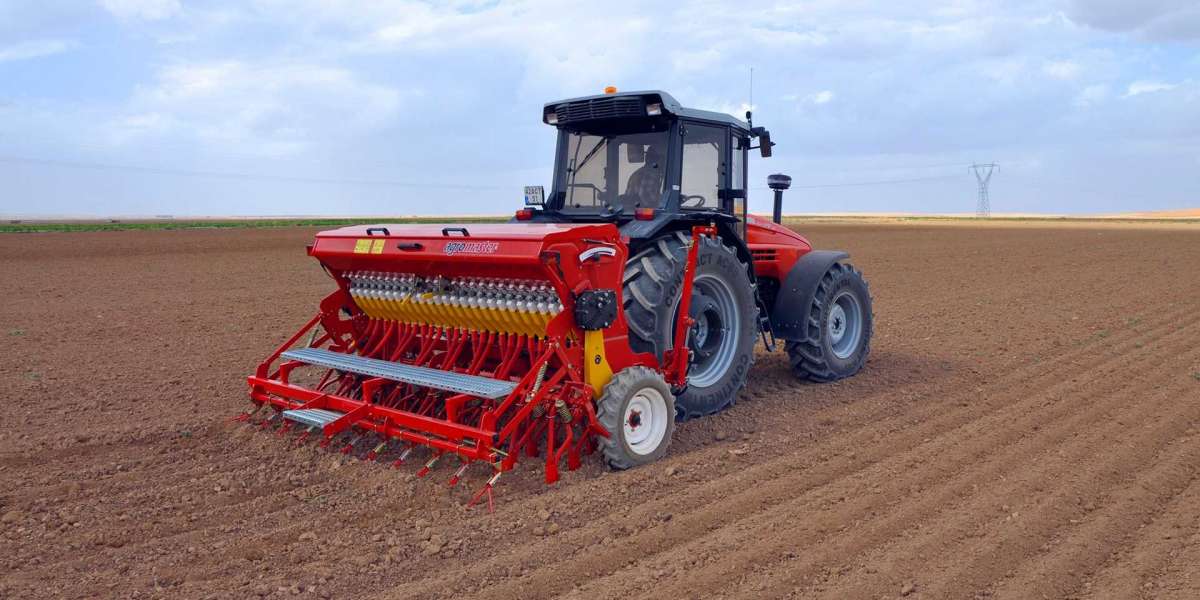The seed drill, an essential tool in modern agriculture, revolutionized the way seeds are sown, significantly enhancing the efficiency and productivity of farming. Invented by Jethro Tull in the early 18th century, the seed drill mechanized the process of sowing seeds, ensuring they were evenly distributed and planted at the correct depth. This innovation laid the foundation for modern farming techniques, contributing to the agricultural revolution and the significant increase in crop yields.
Historical Context and Development
Before the advent of the seed drill, seeds were typically sown by hand, a method known as broadcasting. This process was labor-intensive and inefficient, often resulting in uneven seed distribution and poor crop yields. Jethro Tull, an English agriculturist, observed these inefficiencies and sought to improve the process. In 1701, he developed the first seed drill, which allowed farmers to plant seeds in well-spaced rows at specific depths. This invention not only improved germination rates but also facilitated weed control, as crops were easier to manage when planted in rows.
Over the centuries, the seed drill has undergone numerous modifications and improvements. Modern seed drills are highly sophisticated machines equipped with advanced technology to optimize planting. They can be calibrated to plant seeds at precise intervals and depths, ensuring uniform growth and maximizing land use efficiency.
How the Seed Drill Works
The basic principle of the seed drill remains the same as in Tull's time, though the technology has become far more advanced. Modern seed drills consist of several key components:
- Hoppers: These hold the seeds and ensure a continuous supply to the drill mechanism.
- Furrow Openers: These create narrow furrows in the soil where the seeds will be planted.
- Seed Metering Mechanism: This controls the rate at which seeds are released from the hoppers.
- Covering Mechanism: This covers the seeds with soil after they are planted.
- Press Wheels: These press the soil down to ensure good seed-to-soil contact, promoting germination.
The entire process is highly automated, allowing farmers to plant large areas quickly and efficiently. GPS and computer-controlled systems can further enhance precision, adapting planting patterns to varying soil conditions and optimizing resource use.
Benefits of the Seed Drill
The adoption of seed drills has provided numerous benefits to farmers and the agricultural industry as a whole:
- Increased Yield: By planting seeds at optimal depths and intervals, seed drills significantly improve germination rates and crop yields.
- Efficient Land Use: Precise planting reduces seed waste and ensures more efficient use of land.
- Weed Control: Planting in rows makes it easier to manage weeds, reducing the need for herbicides.
- Labor Savings: Automation reduces the need for manual labor, allowing farmers to manage larger areas with fewer resources.
Integrating Other Agricultural Implements: Cultivators, Rotavators, and Harvesters
While the seed drill plays a crucial role in planting, other agricultural implements are essential for preparing the soil, maintaining crops, and harvesting the produce. Key among these are cultivators, rotavators, and harvesters.
Cultivators
Cultivators are used to prepare the soil before planting and to manage weeds during the growing season. They come in various forms, from simple hand tools to complex, tractor-mounted machines. A cultivator is used for rise cultivation Shifting cultivation. The primary functions of cultivators include:
- Soil Aeration: By breaking up and aerating the soil, cultivators promote better root growth and improve water infiltration.
- Weed Control: Cultivators can uproot weeds and bury them, reducing competition for nutrients and water.
- Soil Preparation: Before planting, cultivators help create a fine seedbed, ensuring better seed-to-soil contact and improving germination rates.
Modern cultivators are often equipped with adjustable tines or discs that can be set to different depths and spacings, allowing for versatile soil management.
Rotavators
Rotavators, also known as rotary tillers, are used to prepare the soil by cutting, pulverizing, and leveling it. They consist of rotating blades that break up the soil, making it suitable for planting. Key benefits of using rotavators include:
- Efficient Soil Preparation: Rotavators quickly break up hard soil clods, creating a fine tilth ideal for seedbeds.
- Incorporation of Organic Matter: They can mix crop residues, compost, and fertilizers into the soil, enhancing its fertility.
- Time and Labor Savings: Rotavators can cover large areas quickly, reducing the time and effort required for soil preparation.
Modern rotavator come with adjustable depth controls and can be attached to tractors, making them suitable for various soil types and farming scales.
Harvesters
Harvesters are essential for reaping, threshing, and cleaning crops, streamlining the harvesting process and significantly reducing manual labor. There are various types of harvesters tailored to specific crops, including combine harvesters, potato harvesters, and cotton pickers. The primary functions of harvesters include:
- Reaping: Cutting the mature crops.
- Threshing: Separating the edible grain or seed from the chaff and straw.
- Cleaning: Removing the remaining debris, leaving only the clean grain or produce.
Combine harvesters, for instance, combine these three processes into one operation, making them incredibly efficient. They are equipped with advanced features such as GPS, yield mapping, and moisture sensors, which enhance precision and productivity.
Conclusion
The seed drill, alongside cultivators, rotavators, and harvesters, forms the backbone of modern agricultural practices. These machines have revolutionized farming by increasing efficiency, reducing labor, and enhancing crop yields. As technology continues to advance, these tools will likely become even more sophisticated, further boosting agricultural productivity and sustainability. The integration of precision farming technologies promises to optimize resource use, improve environmental outcomes, and ensure food security for a growing global population.








